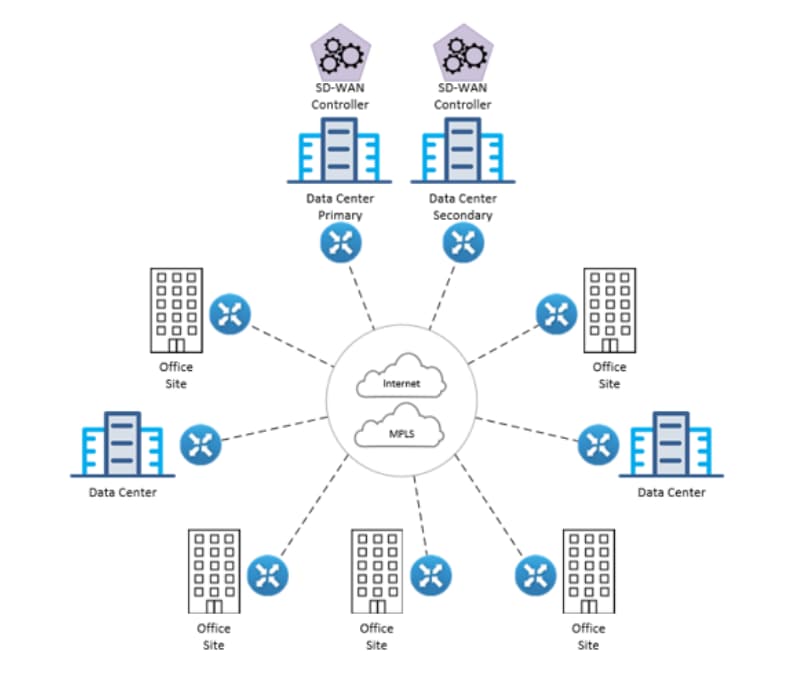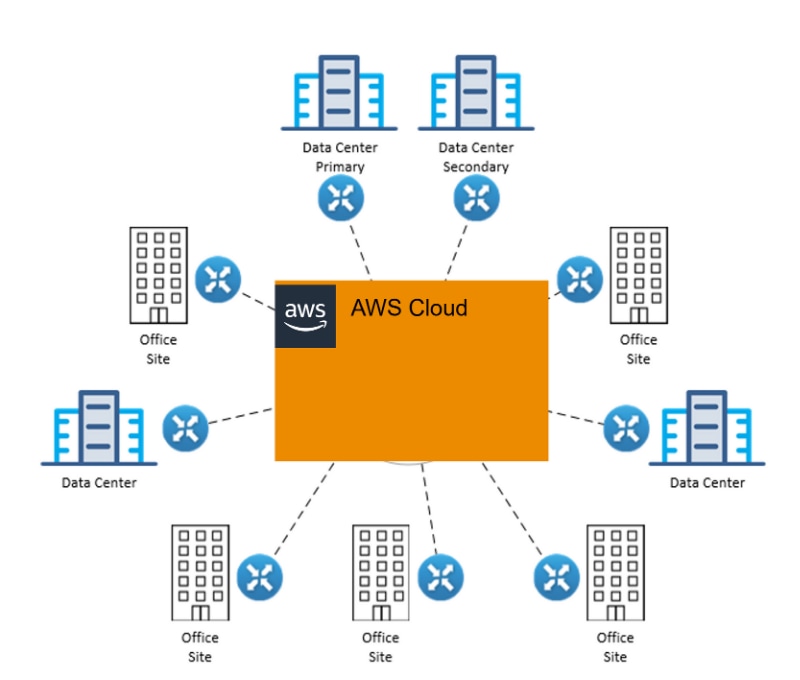What Is AWS’s New Cloud WAN, and How Will It Impact Cloud Networking? | Deloitte US has been saved
A blog post by Paul Borghese, DC Specialist Leader, Deloitte Consulting LLP
At the AWS New York Summit, Amazon announced general availability for its AWS Cloud WAN services. At Deloitte, we cannot be more excited with the design opportunity this allows. Cloud WAN is a game changer and a welcome addition to our networking toolkit.
Networking at its core is a service allowing corporate end devices and users access to corporate compute resources. The gravity of the network follows the location of the compute, usually in a data center. A traditional network design connected corporate sites such as offices and manufacturing to the primary and backup data centers. The data centers contained a robust networking and security capability quickly routing traffic to all destinations in the network. The data center was the hub of the corporate network.
As companies started to embrace the cloud, network engineers connected the data centers to AWS. The AWS Cloud was a networking spoke off a much larger physical data center infrastructure. I like to call it “cloud on a stick” as an homage to the router-on-a-stick designs of the late ’90s. As companies continued to evolve toward the cloud, this cloud-on-a-stick design was no longer adequate. Companies desired full integration with AWS as an equal or even primary part of their network design.
Over time, the networking capability in AWS evolved. You were given the ability to VPC peer between regions. Direct connect allowed high-speed connectivity from private data centers into AWS. In 2018, AWS released Transit Gateway, allowing a more robust connectivity between VPCs. AWS’s Transit Gateway service was a big step forward allowing the ability to easily connect VPC within a region. Multiple Transit Gateways can be peered between regions building complex interconnected networking topologies. And just like the field of dreams, if you build it, they will come. We embraced Transit Gateways, using them to build ever larger and more complex worldwide environments.
Customer needs are quickly evolving as they look for additional capabilities and expand their AWS networking worldwide. Each Transit Gateway is configured independently. It works well interconnecting a few regions, but as the number of regions expand, Transit Gateway becomes cumbersome to manage, maintain, and troubleshoot. A change to the network may require a dozen configuration changes across the world.
Cloud WAN takes the connectivity capability of Transit Gateway and scales it for worldwide connectivity. It provides this capability through built-in automation, intent-based configuration management, and segmentation. The network-centralized configuration is simplified and expansive, reducing errors and increasing agility. The service offers a health monitoring dashboard that allows engineers to view network traffic and events. And DevOps engineers love the Cloud WAN ability to automate AWS tasks such as VPC attachments.
The configuration of Cloud WAN uses the modern network programming technique of a declarative language (JSON) to express intent of how network traffic should flow throughout your AWS environment. You can segment your network and implement security and routing policies on a per-network segment, which takes effect worldwide. Each segment can be limited to select regions (or open to all regions), automatically assigned to VPCs, and built with internet and security controls.
Along with Cloud WAN, AWS recently announced SiteLink, a service that enhances and integrates perfectly with Cloud WAN. SiteLink allows two customer remote sites to use AWS for network transport. With the combination of the capability of SiteLink and the power of Cloud WAN, the future of corporate wide area networking starts to come into focus. Instead of MPLS or SD-WAN connecting into a private data center, the gravity of the network shifts to links connecting into AWS, with AWS becoming the primary transport. And as always, you only pay for what you consume with availability on-demand.
Within the network community there is a lot of discussion around software defined networking and programmability. Soon “public cloud” may be added to the discussion.
Our Cloud WAN white paper has more details on how to integrate Cloud WAN with a Transit Gateway network.
Get in touch

David Linthicum
As the chief cloud strategy officer for Deloitte Consulting LLP, David is responsible for building innovative technologies that help clients operate more efficiently while delivering strategies that enable them to disrupt their markets. David is widely respected as a visionary in cloud computing—he was recently named the number one cloud influencer in a report by Apollo Research. For more than 20 years, he has inspired corporations and start-ups to innovate and use resources more productively. As the author of more than 13 books and 5,000 articles, David’s thought leadership has appeared in InfoWorld, Wall Street Journal, Forbes, NPR, Gigaom, and Lynda.com. Prior to joining Deloitte, David served as senior vice president at Cloud Technology Partners, where he grew the practice into a major force in the cloud computing market. Previously, he led Blue Mountain Labs, helping organizations find value in cloud and other emerging technologies. He is a graduate of George Mason University.



